Vientiane:
Laos is the only land locked country in south-east Asia, and it often gets overlooked compared to its neighbors Thailand and Vietnam. A free weekend in Ho Chi Minh allowed me to venture up north into Laos for a couple of days, to the capital Vientiane. I arrived by late morning, and after a quick lunch of larb (minced meat salad) and Laotian pork sausages washed down with ice cold Beer Lao, I was ready to explore all this tiny city had to offer.

Loading up on Larb before sightseeing
Most of the main sights in Vientiane are conveniently located in the city center and within walking distance. While walking around, I couldn’t help noticing that compared to the hustle and bustle of Ho Chi Minh, the pace of life in Vientiane seemed almost glacial. Folks are really laid back and the city has more of a small town vs capital city feel to it.
Patuxai monument
Laos was once part of French Indochina, and the colonial influences are obvious in the wide leafy boulevards and smattering of French street names. It is hard to miss the Patuxai monument in the city center – Vientiane’s own version of Paris’s Arc de Triomphe. Modeled after its French inspiration, the monument is adorned with figurines and tapestries from Buddhist mythology. I climbed to the top for a birds eye view of the city, then quickly scampered down for some shade to escape the scorching sun.
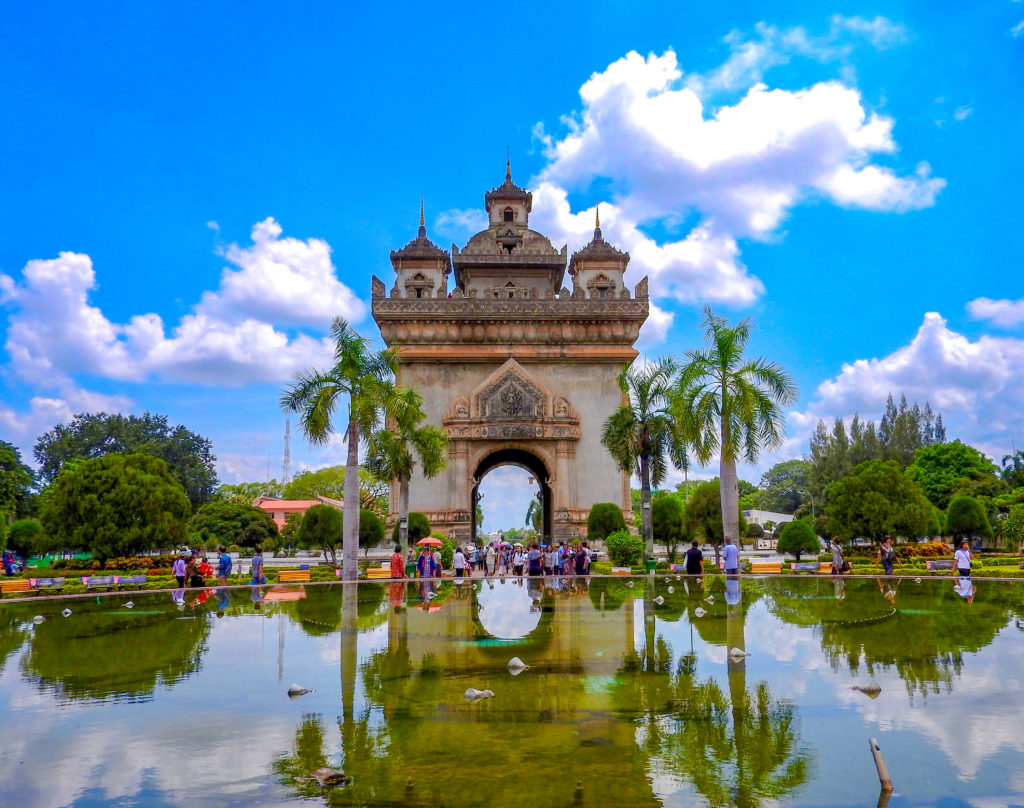
Patuxai monument in Vientiane city center
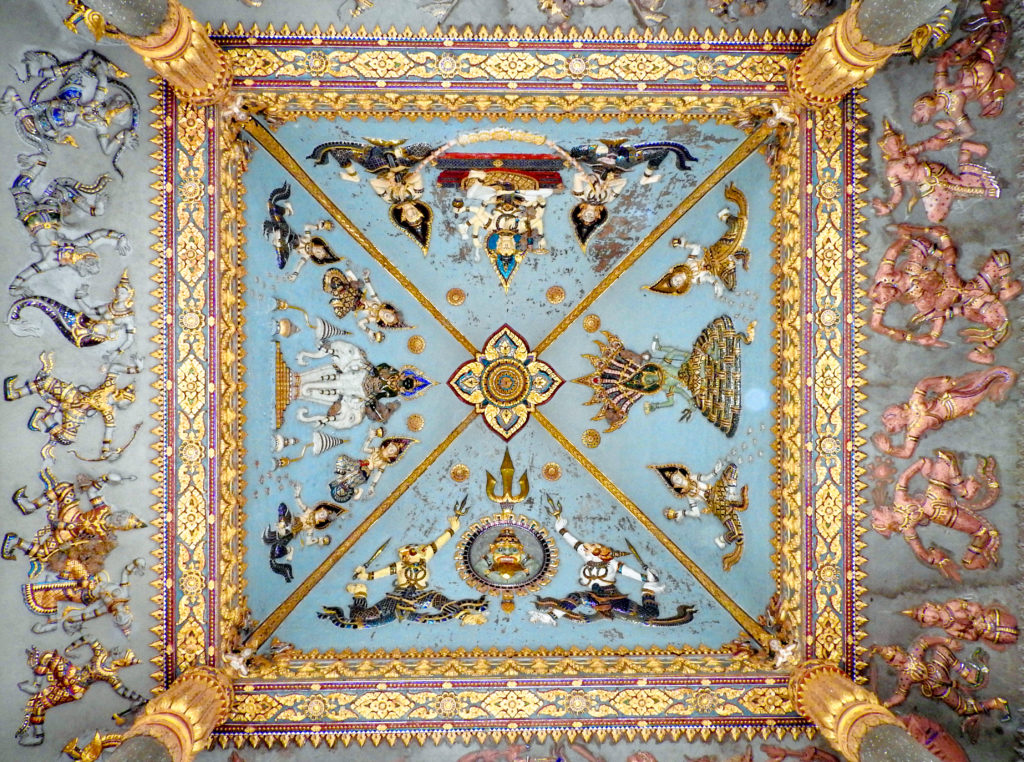
Ceiling decorated with scenes from Buddhist mythology
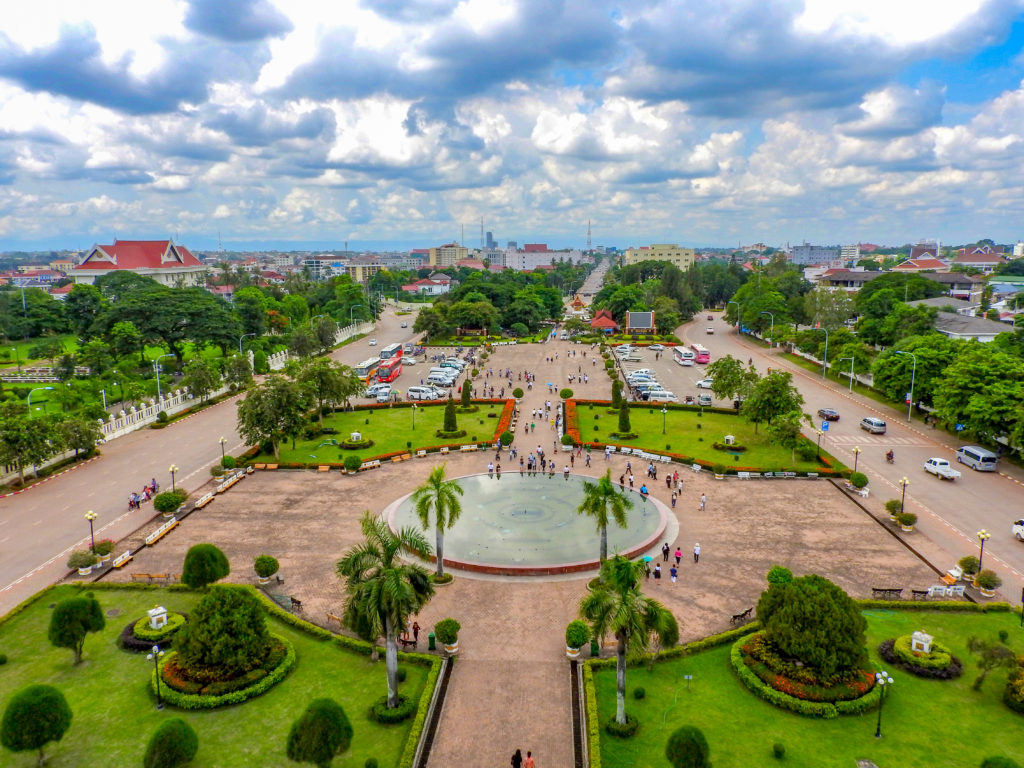
Vientiane views from atop Patuxai monument
Wat Sisaket
My next stop was Wat Sisaket, one of the oldest temples in Vientiane, and the only one that survived a Siamese invasion in the early 18th century. Sisaket is famous for having over 6800 Buddha sculptures within its compound. Each sculpture is unique, yet they all feature Buddha in his inimitable meditative pose. Buddhas as far as my eye could see, or maybe it was double vision from the beer Lao earlier! Small shelves carved into the wall that once held silver sculptures now have clay versions instead. I wrapped up the day like most locals do – perusing the night market stalls, then walking along the bank of the Mekong river and watching the sun lazily set into the horizon.
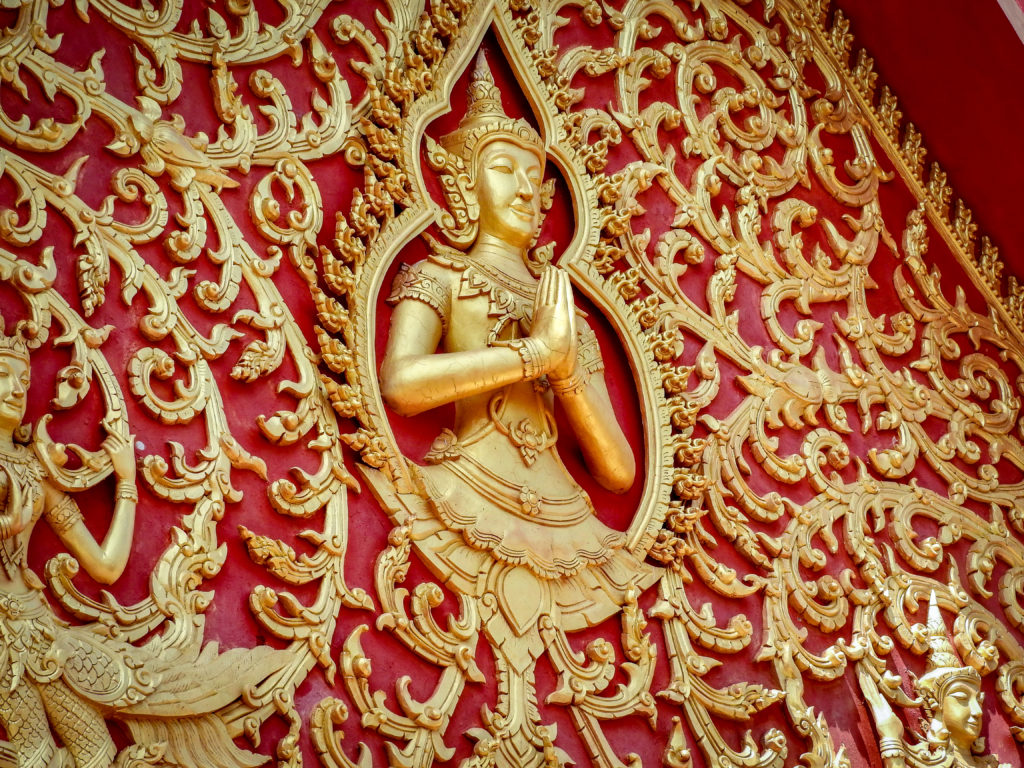
Intricate golden sculptures at entrance to Wat Sisaket
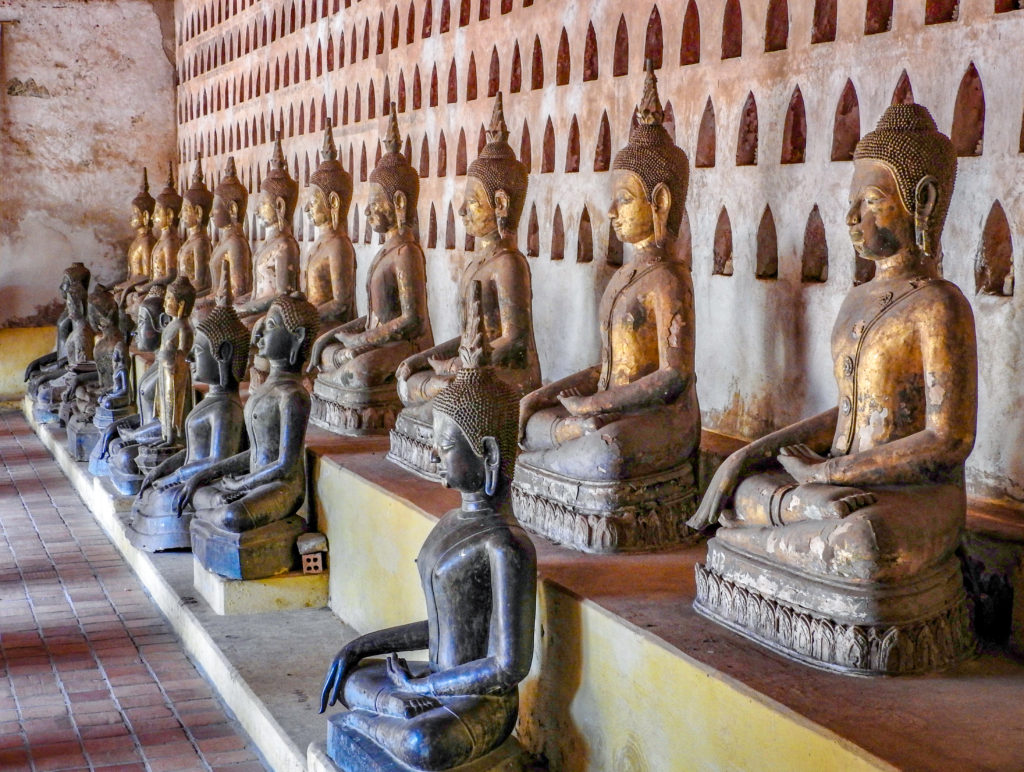
Buddha statues galore
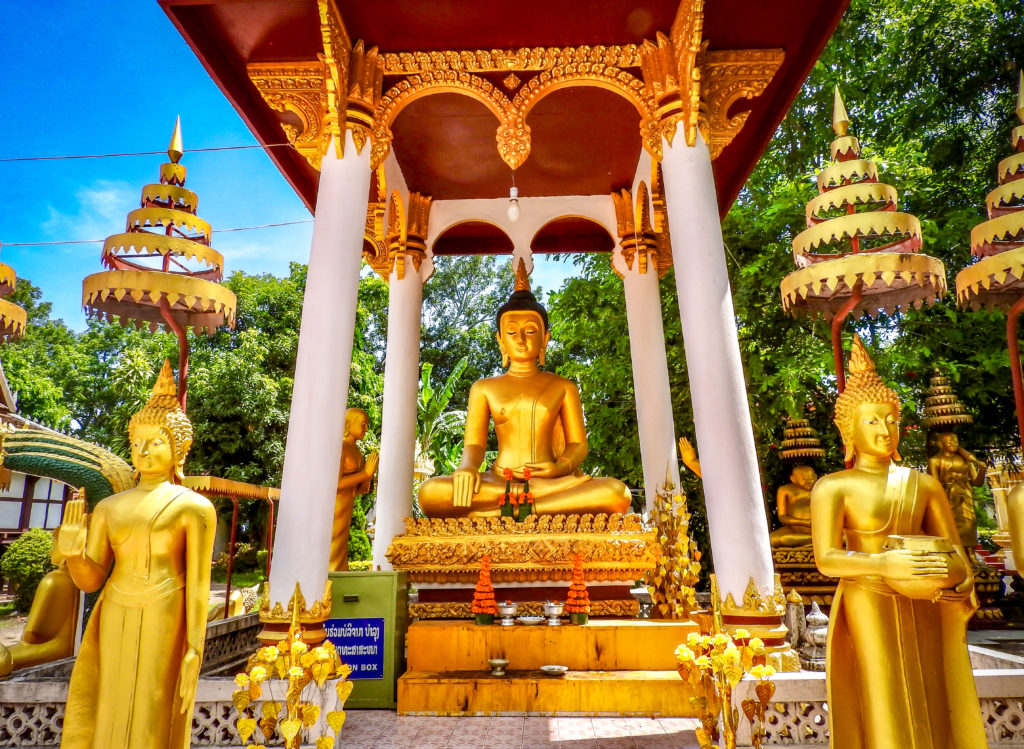
Shrine outside Wat Sisaket
Pha That Luang Stupa
On Sunday morning I grabbed a light breakfast of delectable French pastries then hailed a tuk-tuk to the Pha That Luang (the great golden stupa). Pha That Luang is the most famous symbol of Laos and is prominently featured on all currency notes. Local legends state that the temple was built in the 3rd century BC by monks sent by Emperor Ashoka from India, and was meant to house a holy relic from the breast bone of Buddha. The main stupa is about 50m tall and the pyramid base is surrounded by 30 smaller stupas. The top of the main stupa is said to have been covered in gold, but repeated plundering over the ages meant that it is adorned with a less precious golden paint instead now. I spent some time admiring the shimmering structure and a temple featuring a sleeping Buddha within the same complex, then was ready to bid adieu to the charming and rustic city and head back to Vietnam.
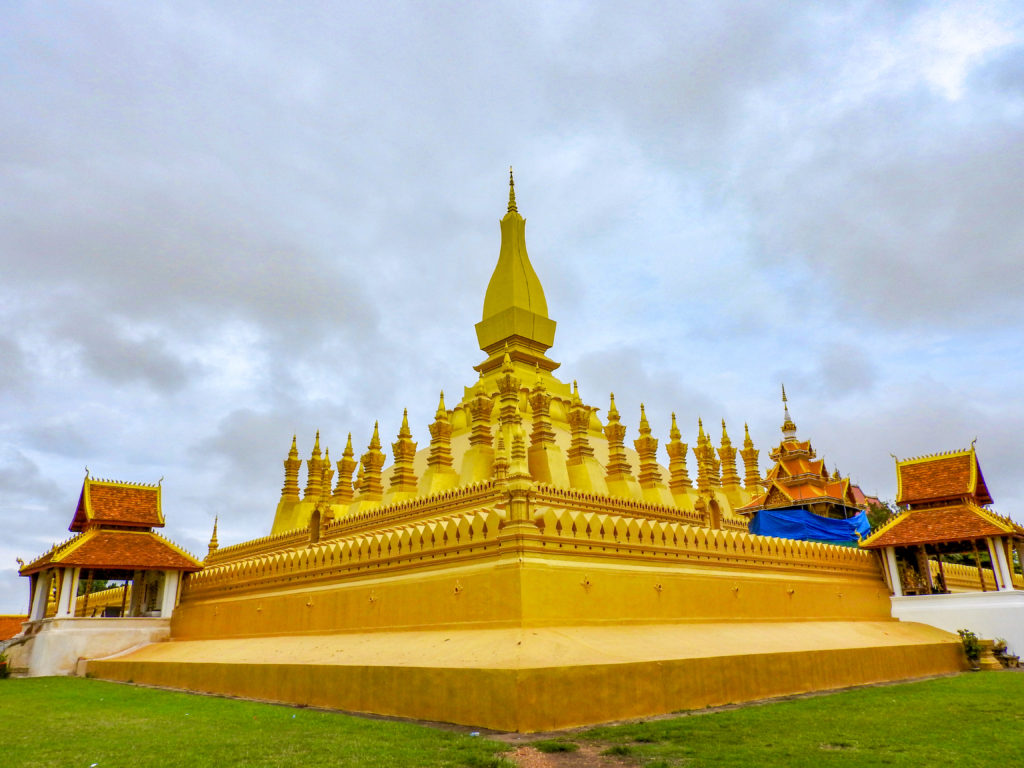
Pha That Luang on an overcast day
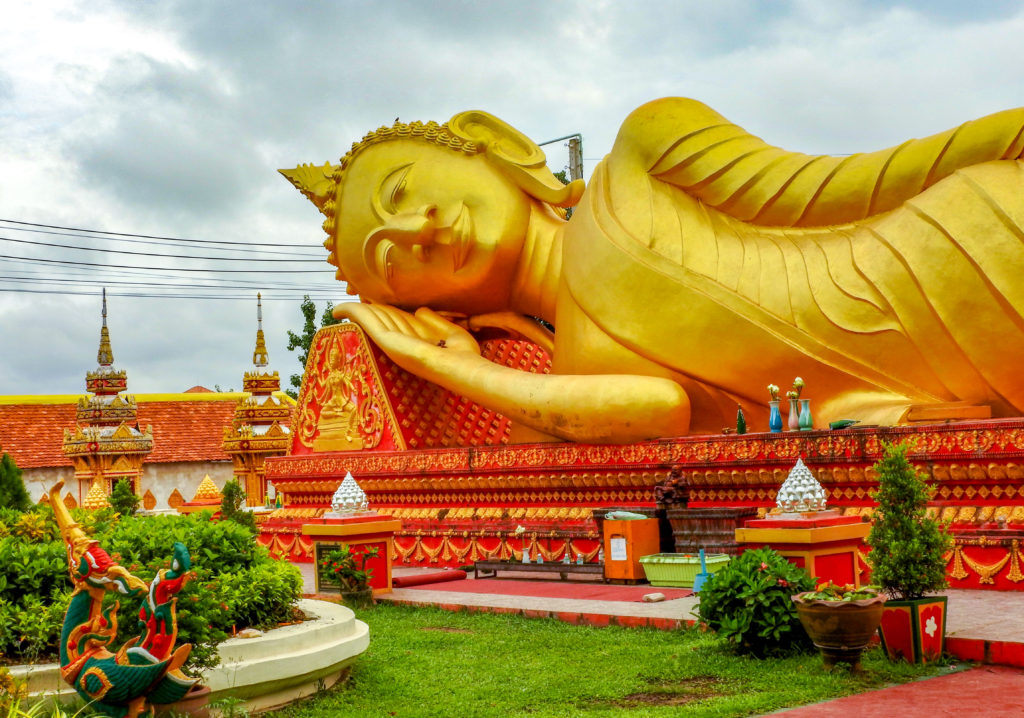
Sleeping Buddha statue in nearby complex
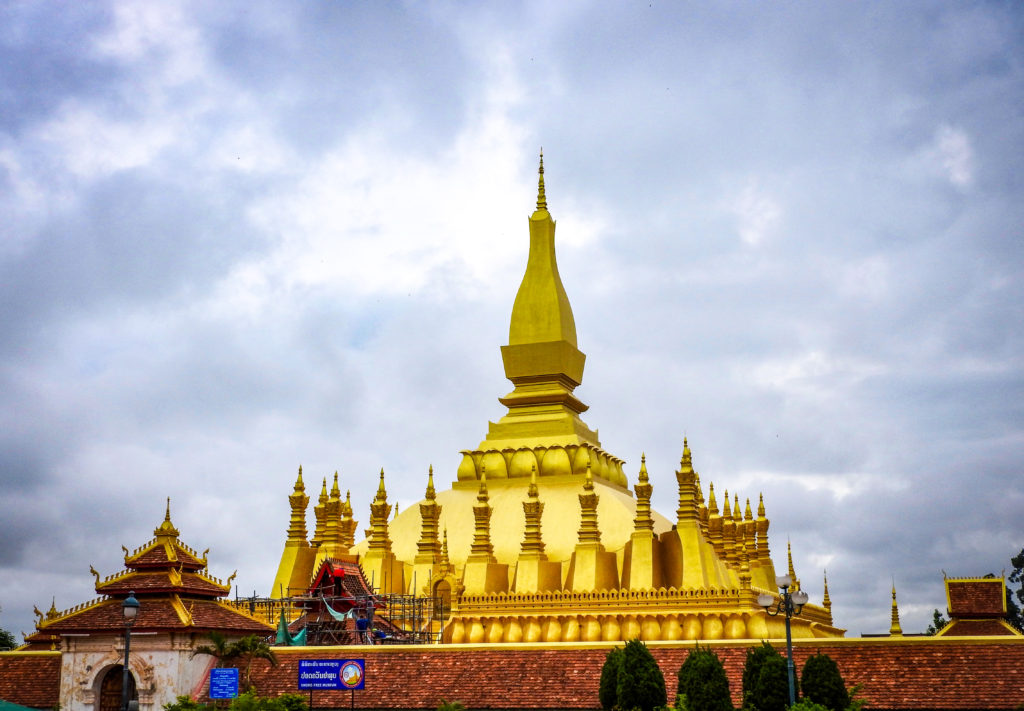
View from outside the compound
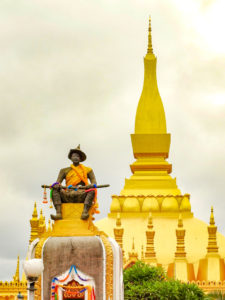
Statue of King Saysetthathirath in front of Pha That Luang

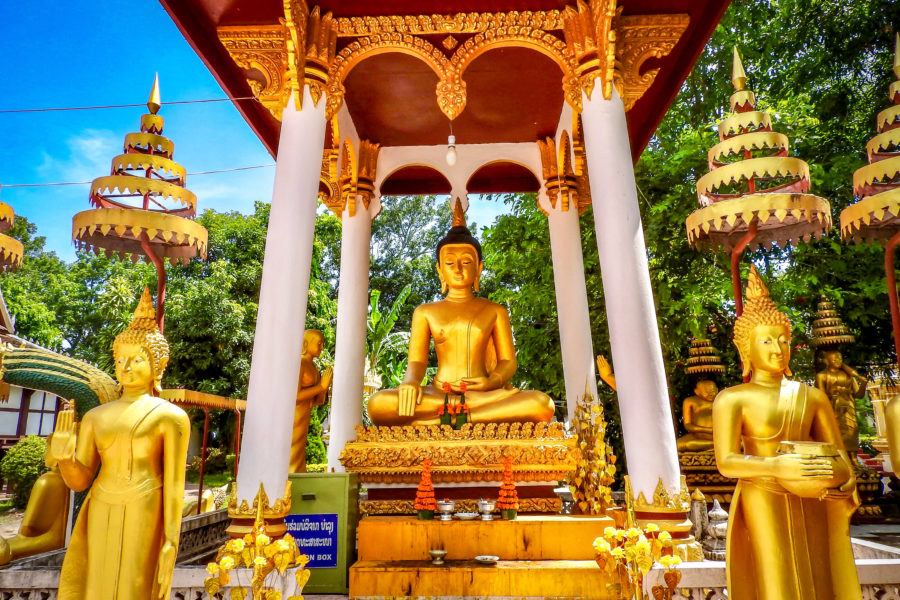
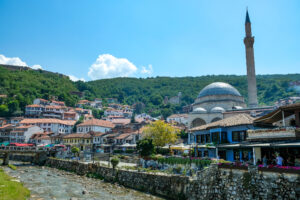
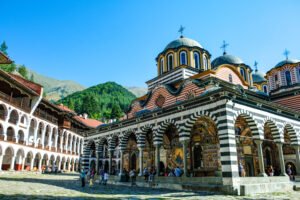
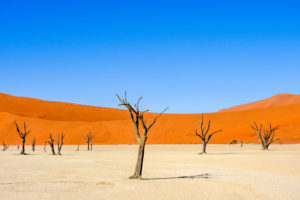




Leave a Reply
Please share your comments below!